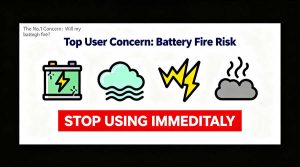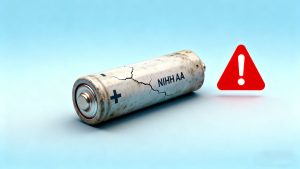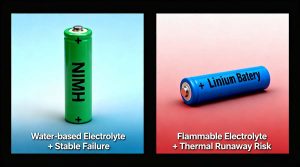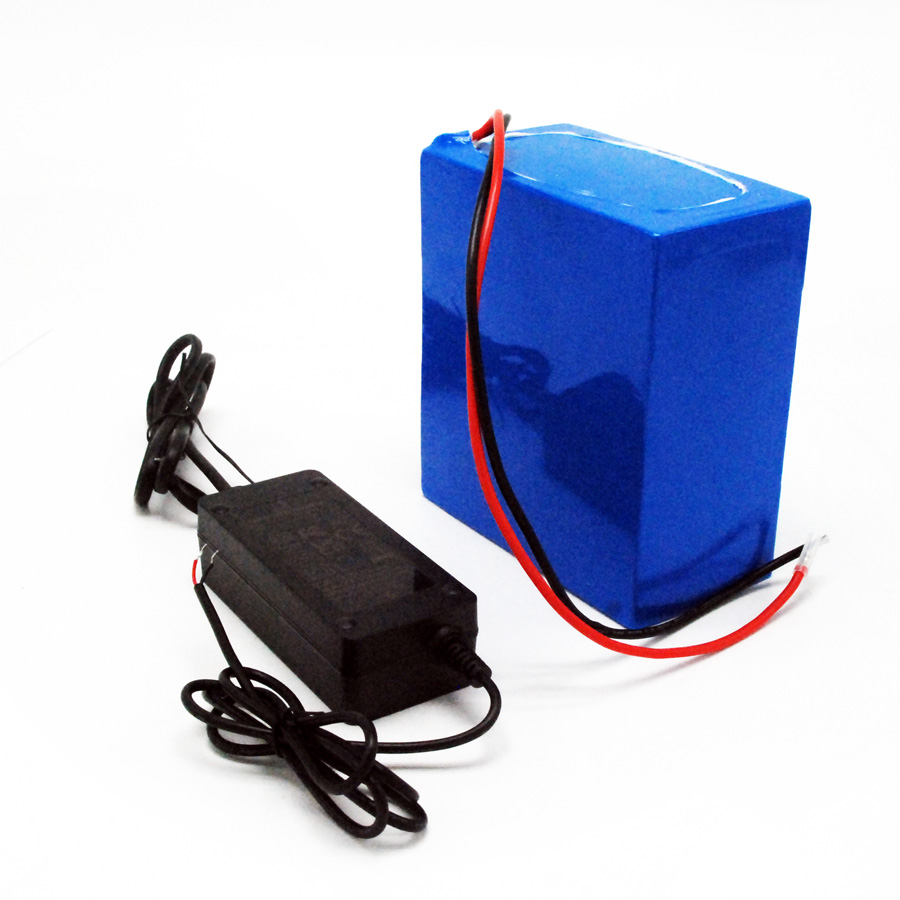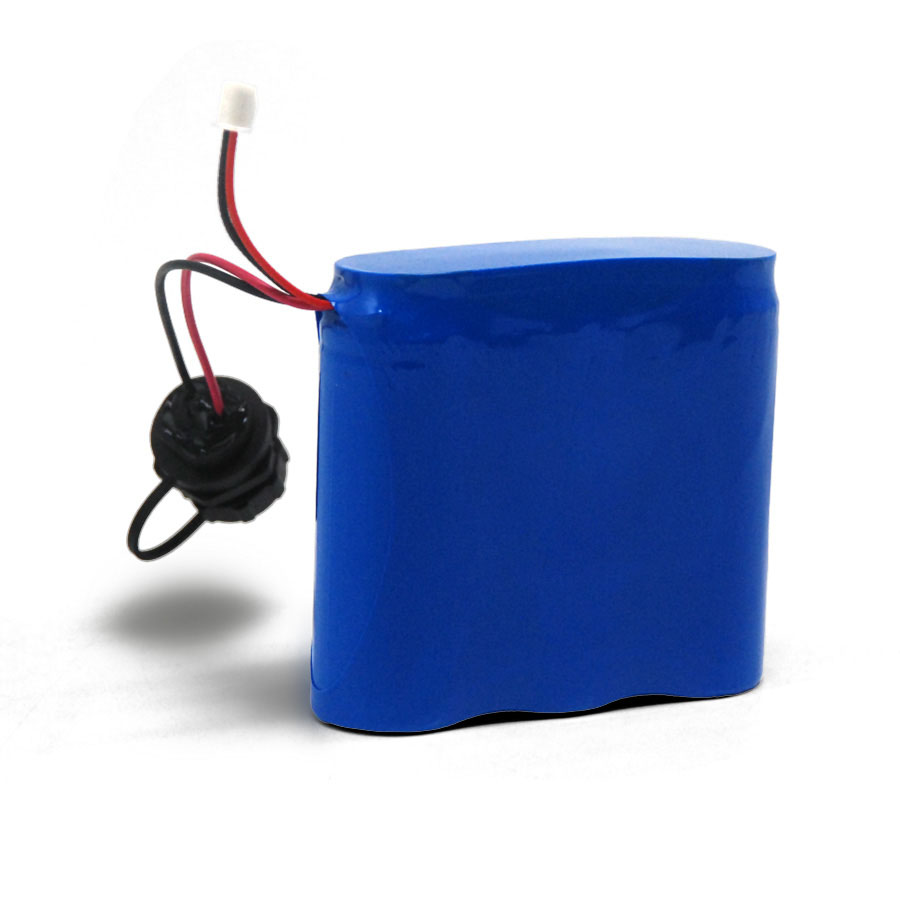How Cold Weather Silently Damages Your NiMH Battery
When most people think about battery problems, they imagine overcharging, poor chargers, or heavy usage cycles. But one of the most overlooked threats to a NiMH battery is something simpler and more unavoidable: low temperature exposure. Cold weather weakens chemical reactions inside the cells. It slows ion movement. It reduces available capacity. It increases internal resistance. These effects hit harder than most users realize.
In daily use, you may not notice these changes at first. Your device might simply run shorter than usual. Your charger may seem slower. Your equipment may feel unreliable in winter. But the real financial damage happens behind the scenes. Cold conditions don’t just hurt short-term performance—they permanently shorten overall lifespan. That creates a hidden cost many consumers fail to calculate. And for businesses powered by rechargeable NiMH packs, that cost adds up fast.
Understanding the Chemistry Behind Temperature Sensitivity
To understand why cold weather is such a threat, you first need to understand how a nickel-metal hydride battery works. A NiMH battery stores energy through chemical reactions between a metal hydride anode and a nickel oxyhydroxide cathode. These reactions depend on predictable ion movement.
When the temperature drops, these reactions slow dramatically. The electrolyte viscosity increases, and ions struggle to move efficiently between electrodes. As a result:
- The battery delivers less usable capacity.
- Voltage drops sooner under load.
- Internal resistance increases.
- Round-trip efficiency decreases.
- Charging becomes less effective or even incomplete.
This isn’t temporary. Repeated low-temperature cycles gradually alter the internal structure of the electrodes. The negative electrode becomes less stable. Charge acceptance declines. The battery ages faster.
This is why long-term exposure to cold, or repeated winter usage, leads to accelerated degradation. Temperature stress becomes a lifetime-reducing factor, even if you recharge correctly.

Performance Loss: The First Financial Warning Sign
The first noticeable effect of cold exposure is simple: the NiMH battery can’t hold the same amount of energy. In freezing environments, many users see capacity drop by 20–50%. Even mild cold—10°C to 15°C—causes measurable losses.
Users often misinterpret this performance dip as normal aging. They assume the battery is “old” and replace it early. This increases cost unnecessarily.
Devices that depend on stable power—such as flashlights, RC devices, electric tools, and outdoor equipment—show the problem even more clearly. A sudden voltage drop may cause early shutdown, even when the battery still contains usable charge.
This performance decline is the first warning sign that cold weather is beginning to shorten the useful life of your pack.
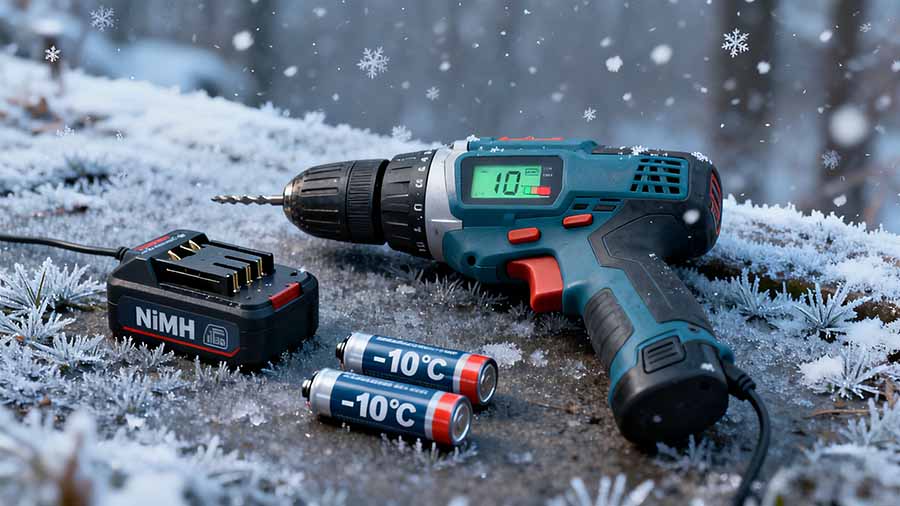
Why Low Temperatures Increase Internal Resistance
Internal resistance is the invisible enemy inside every NiMH battery. At low temperatures, resistance rises sharply. This means the battery must work harder to deliver power, and more energy is lost as heat.
Higher internal resistance causes:
- Fast voltage sag under load
- Inefficient power delivery
- Increased self-heating when charging
- More stress on internal components
- Lower runtime even when fully charged
When this cycle repeats over and over during winter seasons, the battery ages faster. The internal materials degrade, and the battery permanently loses its ability to hold charge.
This is a crucial hidden cost: you’re not just losing performance; you’re losing years of lifespan.
Shortened Lifespan: The Real Cost Most Users Never Calculate
Most people only calculate the price of a NiMH pack upfront. They compare brands. They compare capacities. They compare the price per cell.
But the real cost is total cost of ownership (TCO)—how much you pay over the lifetime of the battery.
Low temperatures significantly reduce cycle life. A NiMH battery rated for 500–1000 cycles may only deliver 300–600 cycles if frequently exposed to cold. That means:
- You buy replacements more often.
- Your devices experience more downtime.
- You spend more on charging energy.
- You invest more in maintenance and storage.
For households, the financial loss might be small but unnecessary.
For businesses—especially those using hundreds or thousands of cells in scanners, medical equipment, industrial tools, or lighting systems—the cost becomes enormous.
Cold weather silently drains your budget, year after year.
Charging a NiMH Battery in Cold Weather: The Hidden Danger
Many users don’t realize that charging a NiMH battery in low temperatures is more dangerous than discharging it. The chemical reactions inside the battery slow significantly below 10°C. When you attempt to charge the cell, it struggles to absorb energy properly. This leads to:
- Incomplete charging
- Gas buildup inside the battery
- Pressure increase
- Higher risk of venting
- Permanent capacity loss
The battery appears to charge normally, but the inside is under severe stress. Repeated cold-weather charging shortens life far faster than cold-weather discharge.
A smart charger with temperature control can reduce the risk. But many consumers use basic chargers that apply the same charging current regardless of temperature. This mistake causes irreversible damage.

How Cold Weather Increases Your Total Cost of Ownership
Once you understand how temperature impacts performance, lifespan, and reliability, the financial impact becomes clear. Low temperatures increase TCO in several ways:
- More frequent replacements – Shortened cycle life forces earlier purchase of new packs.
- Higher energy costs – Inefficient charging wastes electricity.
- More downtime – Devices shut down earlier or fail at critical moments.
- Increased maintenance – You need better storage solutions and temperature-controlled logistics.
- More backup batteries – You must buy extra packs to compensate for winter performance losses.
This is the hidden cost most people ignore until it becomes too expensive to overlook.
How to Protect Your NiMH Battery From Cold Damage
The good news is that you can protect your NiMH battery with a few simple steps. Even small improvements in storage temperature can extend lifespan significantly.
Here are practical tips to reduce cold-related damage:
- Keep batteries indoors or insulated whenever possible.
- Avoid storing batteries in garages, cars, or outdoor sheds during winter.
- Never charge NiMH cells below 0°C.
- Use a temperature-controlled smart charger with proper cutoff.
- Warm up batteries to room temperature before charging.
- Use insulated battery cases for outdoor applications.
- If using the battery in freezing environments, choose low-temperature optimized NiMH cells.
These steps extend runtime, protect chemical integrity, and lower your long-term costs.
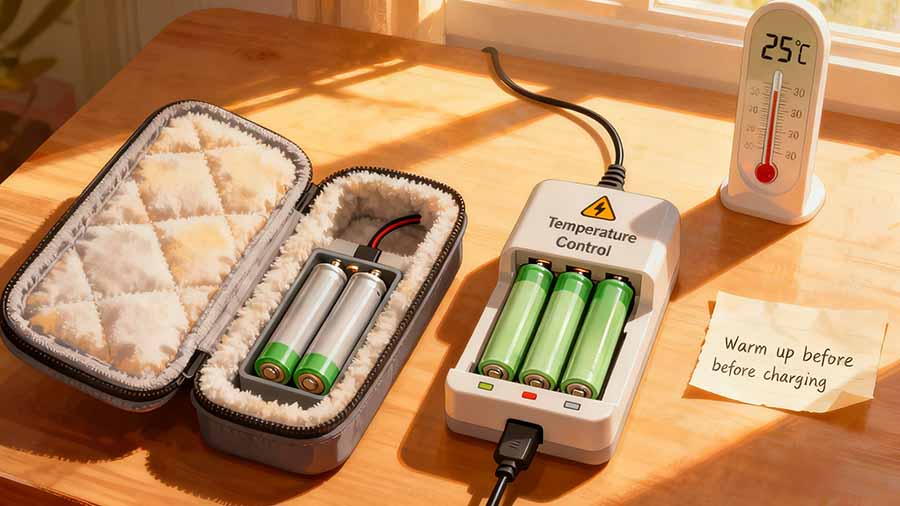
Why Businesses Must Pay Special Attention
For organizations using large numbers of NiMH battery packs, winter damage is more than a performance issue—it’s a cost crisis. Many companies unknowingly lose thousands of dollars each winter because they fail to manage battery temperature properly.
Industries affected include:
- Warehouse and logistics (barcode scanners, tools)
- Healthcare (portable medical equipment)
- Industrial maintenance
- Outdoor inspection teams
- Emergency services
- Consumer product manufacturers
By implementing temperature-aware storage, charging, and transportation policies, companies can reduce annual battery replacement costs by 30–50%.
Introducing HiMAX NiMH Batteries
If you need high-quality NiMH batteries engineered for durability, consistency, and better performance across temperature extremes, HiMAX is a brand you can trust. HiMAX provides reliable, customizable NiMH solutions built with premium materials, stable chemistry, and excellent low-temperature resilience. Whether you’re powering consumer electronics, industrial equipment, or custom OEM applications, HiMAX delivers long-lasting performance with exceptional value.
Find articles related to NiMH Battery


